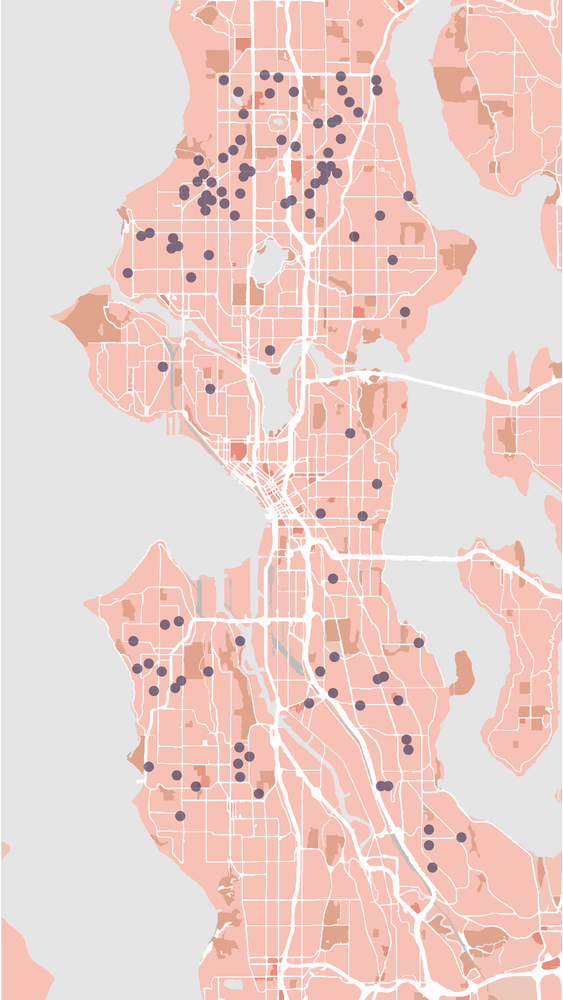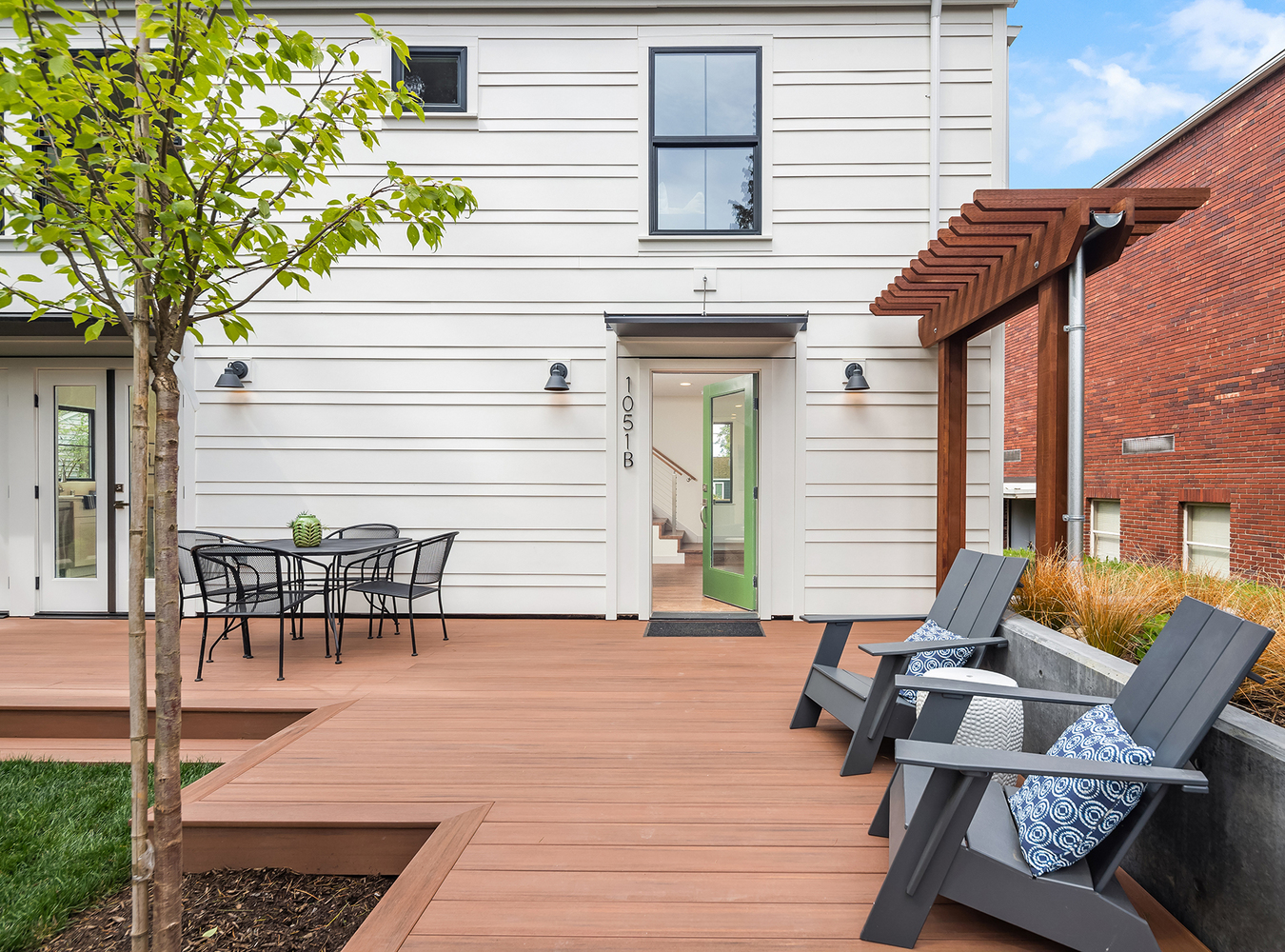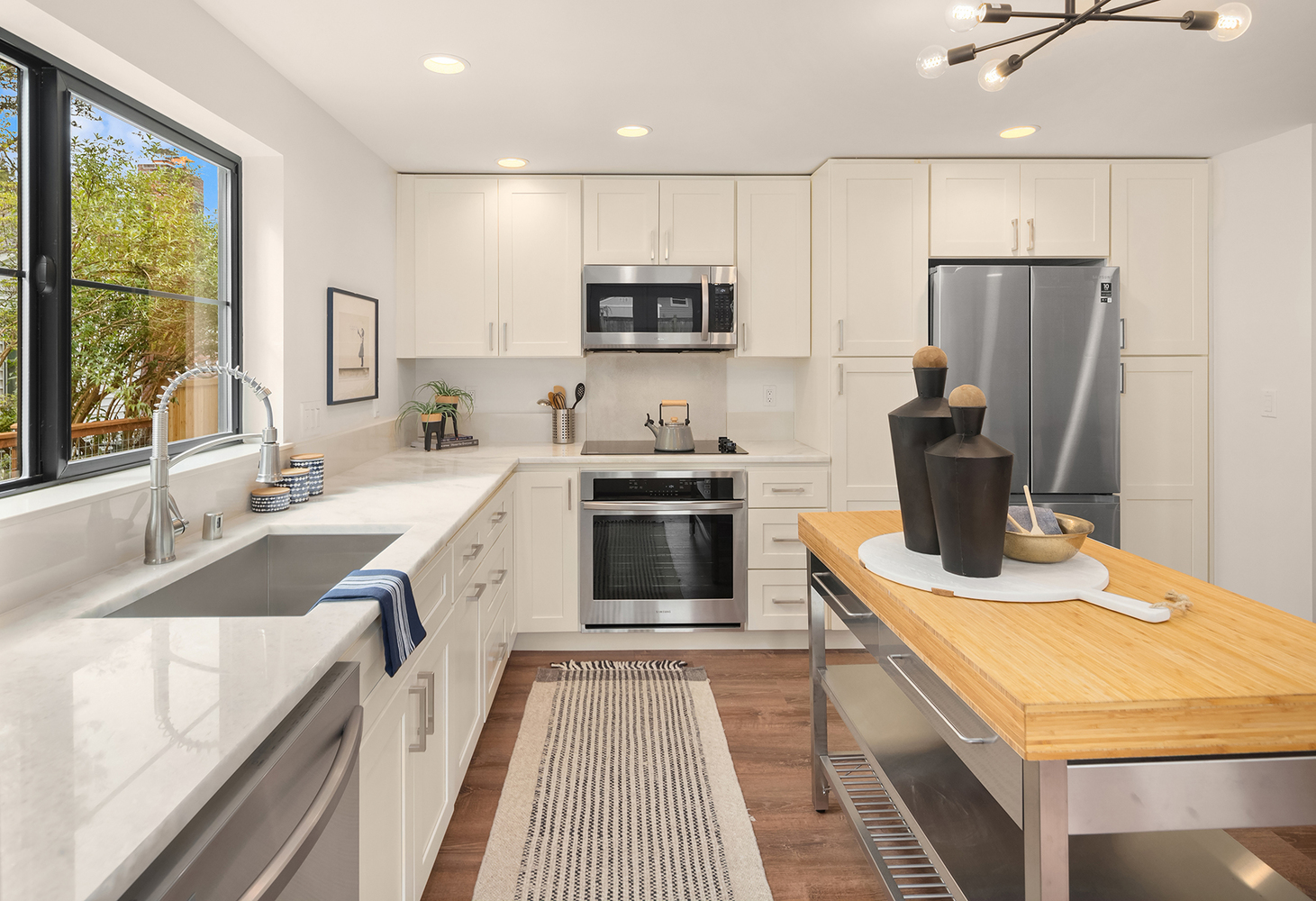In 2020, our design of a backyard cottage, the Schooner, alongside several designs submitted by other architects, was published by the City of Seattle to be used as a pre-approved drawing set for easy implementation into backyards all over the city.
The pre-approved building plans offer a faster, easier, and more predictable permitting process for creating a fixed-design DADU; in many cases, you can get your permit in just 3-6 weeks.
Four years later, our design has been built over 100 times across the city, and permitting for DADUs now outnumbers permitting for single-family homes 2:1. As data becomes available on the impact of this initiative by the City, we’re interested in tracking not only where these DADUs are being built, but by who, and what they cost. Below is an overview of the City’s findings.
ADUs are more common in neighborhoods with lower displacement risk (see map below). Neighborhoods with lower displacement risk tend to be higher-income, lower diversity neighborhoods that have often not been impacted by redlining in the past.
87% of the DADUs are built within Neighborhood Residential zones, which means they are rarely built in zones that already allow higher density, and they meaningfully contribute to adding more housing options to the low-density Neighborhood Residential zone.
One in eight are made available to friends or family for free. This relatively small percentage indicated that the ADUs aren’t being used simply to add more room to the existing home. The report further showed that about a third of owners rent out their ADUs long-term, and around 10% of ADUs have a short term rental license. This means a little less than half of the units are being sold, around 44%.
Median sales price of the pre-approved ADUs is $757.5K, compared to $1.18M for principal dwelling units and $1.61M for new detached homes. This makes them significantly more affordable than many other units in the city, while still remaining unaffordable to many.
See below a map of all the locations of our Schooner design.
We love the idea that these pre-approved homes are adding density and a modicum of affordability to the city, and the story of a long-time homeowner having barriers removed to the complexity of adding a dwelling to their site is enticing. However, in our experience, those licensing our DADUs weren’t homeowners looking to add a rental or room to their house — but developers, looking to add them to an existing lot. In effect, the pre-approval process may have helped developers simply develop more cheaply. Thankfully, this isn’t the only benefit we see; the number of long-term rentals indicates a contribution to the rental market in a traditionally low-inventory zone, and the opening of a gap in the tight market that offers a detached dwelling with two bedrooms in the price range of these DADUs is a very real benefit.
However, we also see a number of opportunities for the City to create a better impact with this program — the low-hanging fruit is to open up the program to more submissions. There are currently seven options available, ranging from 288 to 1,000 square feet; our design is the largest on the list. But once in-hand, clients realize the pre-approved DADU plans are, by nature, quite inflexible. If upon closer inspection, the layout doesn’t align with their needs, they have few other options to consider in a similar size range. More variety would be of benefit for end users who might want different designs as, as well, benefit the city at large with a more varied urban fabric.
Adding more density into the city, especially within the single-family zone, is an ongoing topic of conversation in our studio. Keep an eye on our blog for more, especially as it relates to Seattle’s interpretation of statewide Housing Bill 1110.


